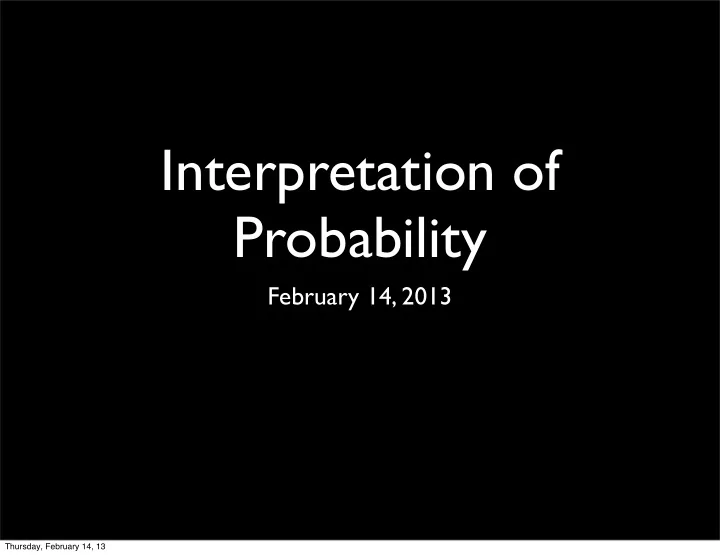

Interpretation of Probability February 14, 2013 Thursday, February 14, 13
Thursday, February 14, 13
Thursday, February 14, 13
Correlation is not causation Solution: Controlled experiments Thursday, February 14, 13
In 1999, UK prosecutors charged Sally Clark with murdering her two infant children, who had apparently both died in their sleep. Thursday, February 14, 13
Her defense: sudden infant death syndrome Thursday, February 14, 13
Expert witness: P(1 child dying of crib death) = 1/8550 Thursday, February 14, 13
Expert witness: P(1 child dying of crib death) = 1/8550 P(both dying) = 1/8550^2 = 1/73 million Thursday, February 14, 13
The probability she is innocent is 1 in 73 million. Therefore, she must be guilty. Thursday, February 14, 13
The probability she is innocent is 1 in 73 million. Therefore, she must be guilty. What do you think? Thursday, February 14, 13
Error 1: P(innocent | both children dead) ≠ P(both children dead | innocent). Thursday, February 14, 13
Error 1: P(innocent | both children dead) ≠ P(both children dead | innocent). Error 2: No reason to believe the probabilities are independent. (In fact, they likely aren’t: susceptibility to SIDS is partly genetic.) Thursday, February 14, 13
Summary Thursday, February 14, 13
Risk = expected value of losses Thursday, February 14, 13
Risk = expected value of losses = P(loss) x amount of loss Thursday, February 14, 13
Choose the option where you’re likely to lose the least (i.e., smallest expected value of loss) Thursday, February 14, 13
Risk = expected value of losses = P(loss) x amount of loss Thursday, February 14, 13
Risk = expected value of losses = P(loss) x amount of loss May be tricky Thursday, February 14, 13
Risk = expected value of losses = P(loss) x amount of loss Need to use consistent units. Doesn’t take into account loss-aversion. Thursday, February 14, 13
Recommend
More recommend